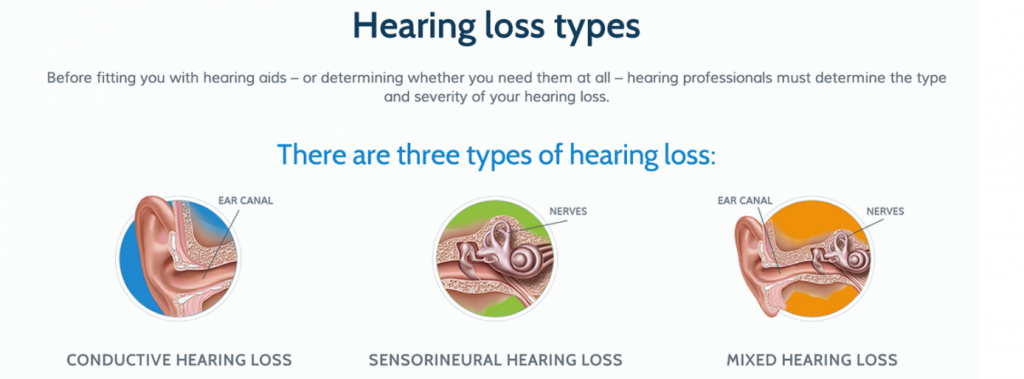Hearing loss can be divided into three main categories depending on where the damage is in the ear and what causes it: sensorineural hearing loss, conductive hearing loss and mixed hearing loss. You could know which treatment is best for you with the understanding of your hearing loss cause and type. Now let’s take a look at these hearing loss types.
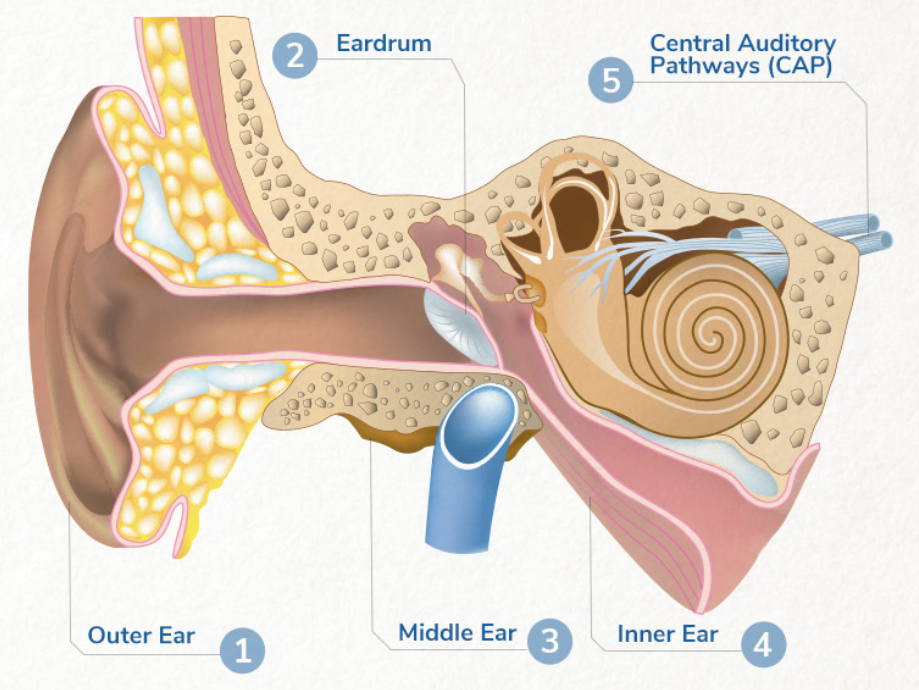
sensorineural hearing loss
- What is sensorineural hearing loss?
Sensorineural hearing loss is the most common type of hearing loss. This means that there is a problem with the inner ear or the auditory nerve that affects the transmission of sound to the brain, which affect the loudness and clarity of sound.
- What Causes Sensorineural Hearing Loss? What are the symptoms?
The most common causes are aging, and constant exposure to noise. For many people, they will suffer from high-frequency hearing loss, so that you feel that you can hear but not clearly understand. Or you experience difficulty duringa conversation when two or more people are speaking at the same time.
- What an audiogram of sensorineural hearing loss looks like
For sensorineural hearing impaired, both bone conduction and air conduction is abnormal and the two test lines are relatively close to each other.
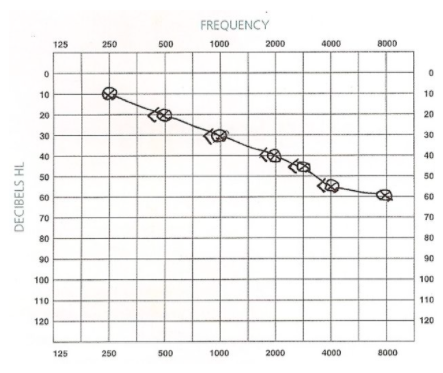
An example of mild to moderate sensorineural hearing loss
- Treatment of sensorineural hearing loss
In order to find out whether the problem is in the cochlea or with nerve, other diagnose tests are needed. Based on the severity of the hearing loss, hearing aids or cochlear implants may be used to treat sensorineural hearing loss.
Conductive hearing loss
- What is conductive hearing loss?
Conductive hearing loss is relatively rare and is usually caused by a blockage or trauma that prevents sound from reaching the inner ear.
- What are the causes of conductive hearing loss? What are the symptoms?
The cause of conductive hearing loss could be a blocked ear canal or a damaged middle ear. Users with this type of hearing loss are primarily affected in terms of sound loudness rather than clarity, as their inner ear and nerves are normal.
- What an audiogram of conductive hearing loss looks like
In this circumstance, bone conduction result is normal white air conduction result showing there is a hearing loss.
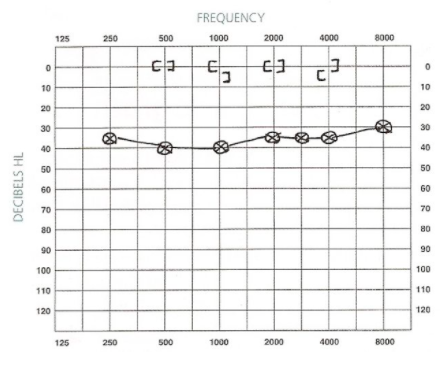
An example of mild conductive hearing loss
- Treatment of conductive hearing loss
Middle ear disorders caused by otitis media can be corrected with medication or surgery. Other complex causes of conductive hearing loss are more difficult to treat medically and can be helped by bone conduction devices.
Mixed hearing loss
- What is Mixed hearing loss?
It is a combination of sensorineural and conductive hearing loss.
- What are the causes of mixed hearing loss? What are the symptoms?
Mixed hearing loss usually occurs when there is some kind of trauma to the ear. It can also occur gradually over time when one hearing loss is compounded with another hearing loss.
- What an audiogram of mixed hearing loss looks like
Both air and bone conduction are both showing hearing loss problem.
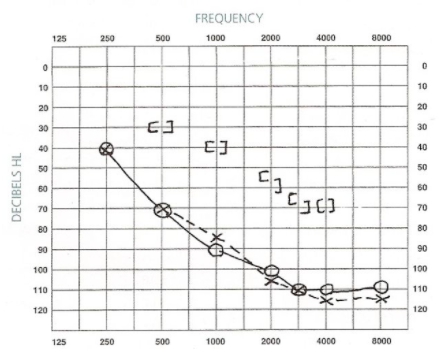
An example of moderate to profound mixed hearing loss
- Treatment of mixed hearing loss
Treatment options for mixed hearing loss will depend on whether the loss is essentially sensorineural or conductive in nature. If the majority of the loss is due to a conductive problem, surgical procedures and other medical treatments may be more effective. If the majority of the loss is sensorineural, hearing aids or implantable devices may be the best option.
Summary
In conclusion, conductive hearing loss is the sound can not reach the inner ear, sound loudness is affected, surgery or medication is more effective; sensorineural hearing loss is a problem in the inner ear or nerves, affecting the transmission of sound signals to the brain, sound clarity and loudness are affected, hearing aids or bone conduction devices can help; mixed hearing loss is a combination of two types, the root cause will decide best treatment.
Reference:
https://visual.ly/community/Infographics/health/types-hearing-loss-2

